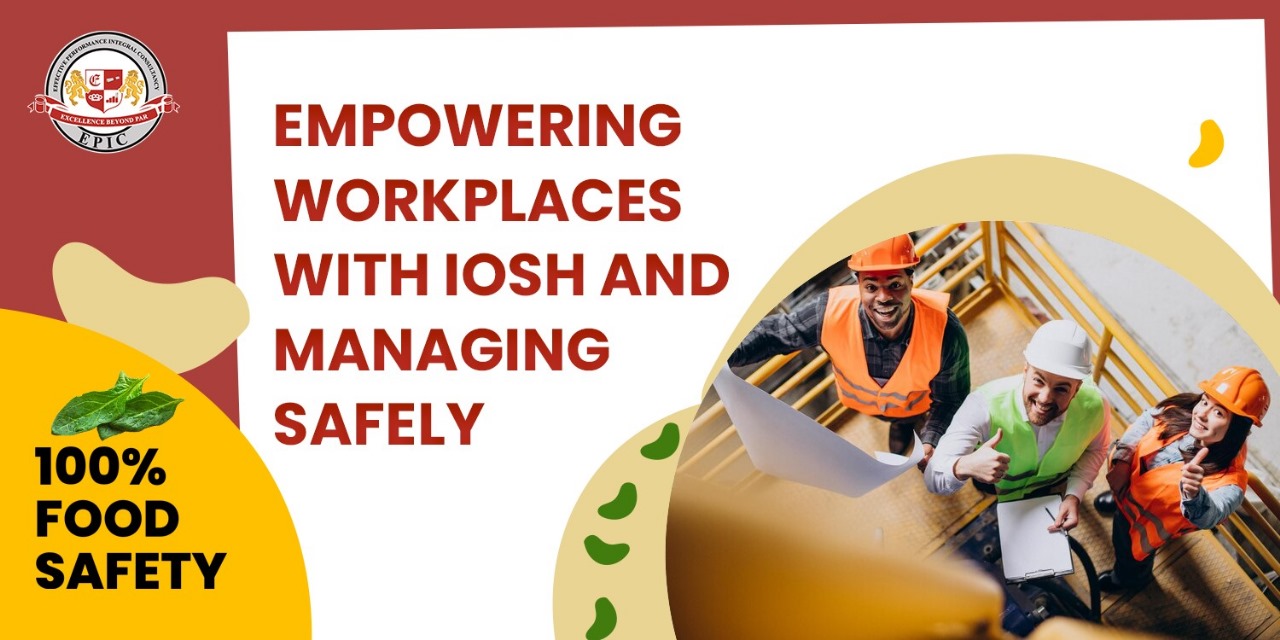
IOSH, a globally recognized professional body, is at
the forefront of promoting and maintaining high standards of health and safety
in the workplace. With a membership spanning across industries and sectors,
IOSH plays a pivotal role in shaping policies, setting standards, and providing
training to professionals worldwide. The institution's commitment to creating
safer and healthier working environments is reflected in its diverse range of
programs designed to meet the specific needs of various industries.
IOSH Managing Safely is a flagship course designed to
empower leaders and managers with the knowledge and skills needed to
effectively manage health and safety in their organizations. The course goes
beyond the basics, offering insights into risk assessment, hazard
identification, and the development of a robust safety management system.
Participants emerge not just as managers but as safety leaders, equipped to
foster a culture of safety and well-being within their teams and organizations.
Earning an IOSH certificate, particularly from the Managing Safely program, is a testament to an individual's commitment to excellence in occupational safety. The certificate not only validates the successful completion of the course but also signifies a comprehensive understanding of health and safety principles, risk management, and legal compliance. Possessing an IOSH certificate enhances professional credibility, opening doors to new opportunities and leadership roles in the field of occupational safety.

What sets IOSH training apart is its dynamic and
interactive approach. The courses are designed to engage participants actively,
combining theoretical knowledge with practical applications. The interactive
nature of IOSH training ensures that participants not only grasp theoretical
concepts but also learn how to implement them in real-world scenarios. Case
studies, group discussions, and hands-on exercises create an immersive learning
experience that resonates with professionals from diverse backgrounds.
The IOSH Managing Safely course is structured to
address the specific challenges faced by managers and leaders in promoting
safety within their organizations. The content covers a range of topics, from
understanding the legal responsibilities related to health and safety to
implementing effective risk control measures. The course is not just about
compliance; it's about instilling a proactive approach to safety management,
empowering participants to identify and mitigate risks before they escalate.
Participating in IOSH training, especially the
Managing Safely program, goes beyond acquiring technical knowledge. It instils
a culture of safety within individuals and organizations. Professionals who
undergo IOSH training become ambassadors of safety, influencing their
colleagues and subordinates to prioritize health and well-being. This cultural
shift has a transformative impact on workplace dynamics, fostering an
environment where safety is not just a requirement but a shared value embedded
in every aspect of operations.
As the landscape of work evolves, IOSH continues to play a pivotal role in shaping the future of occupational safety. Their commitment to ongoing research, development of innovative training programs, and advocacy for higher safety standards positions IOSH as a thought leader in the field. Professionals who engage with IOSH training contribute not only to their personal development but also to the advancement of safety practices globally.
In conclusion, IOSH and its flagship program, Managing
Safely, represent a driving force in building a safer and healthier tomorrow.
Through comprehensive training and certifications, IOSH empowers professionals
to become leaders in occupational safety, influencing positive change within
their organizations. The IOSH certificate becomes more than just a credential;
it becomes a symbol of a commitment to excellence and a catalyst for a cultural
shift towards safety. As workplaces navigate the complexities of the modern
world, the impact of IOSH resonates in the form of empowered leaders, proactive
safety measures, and a collective vision for a safer, healthier, and more
resilient future.